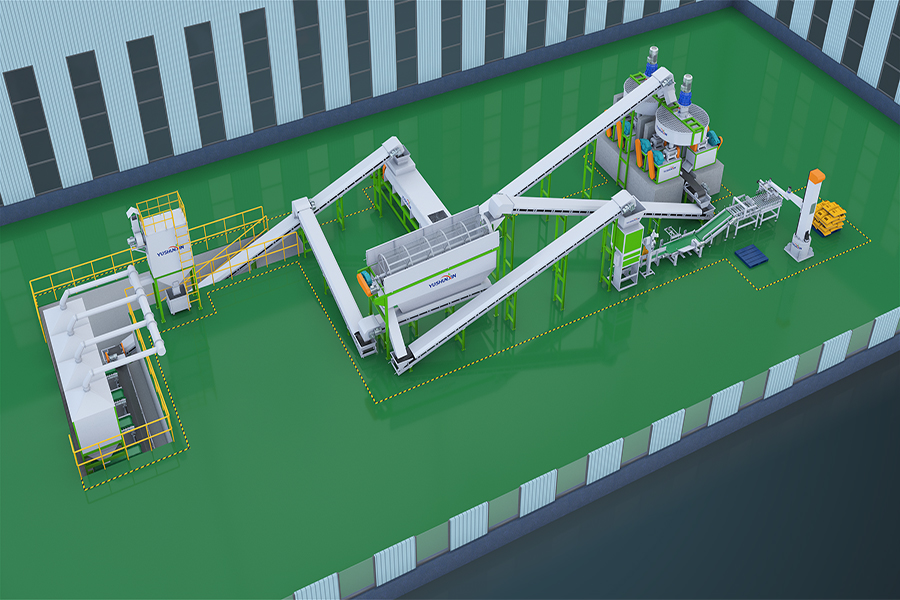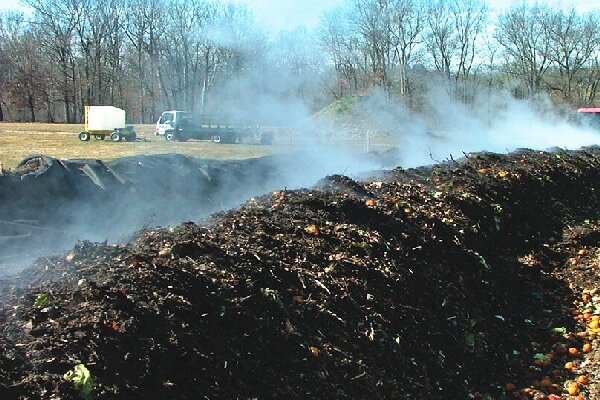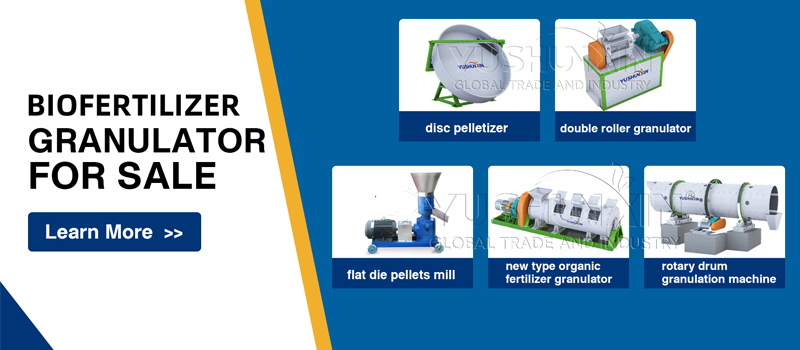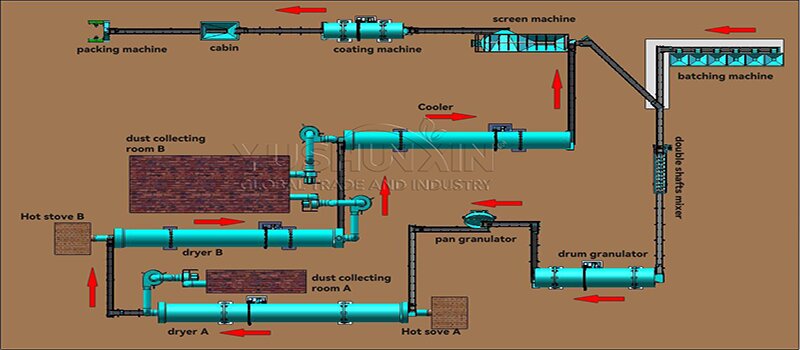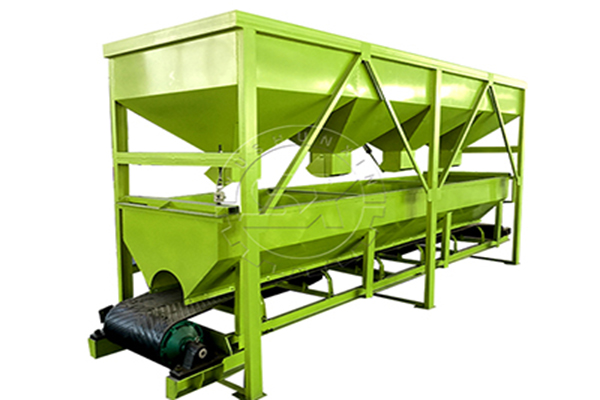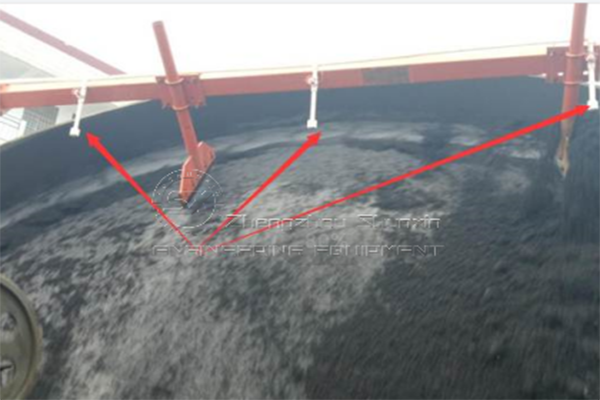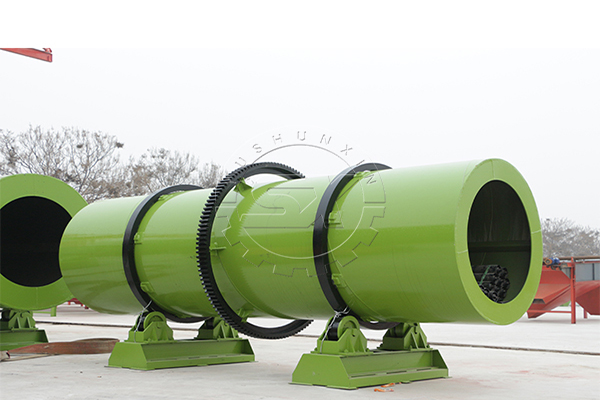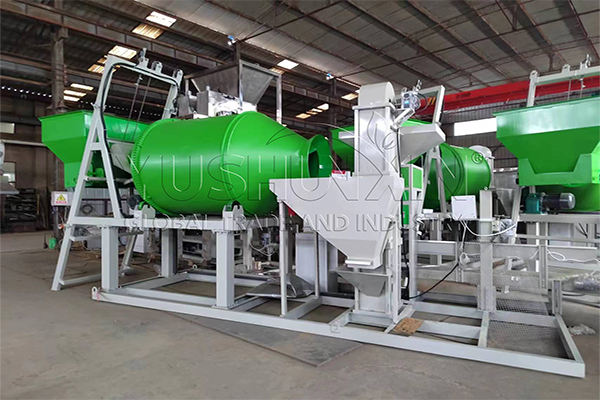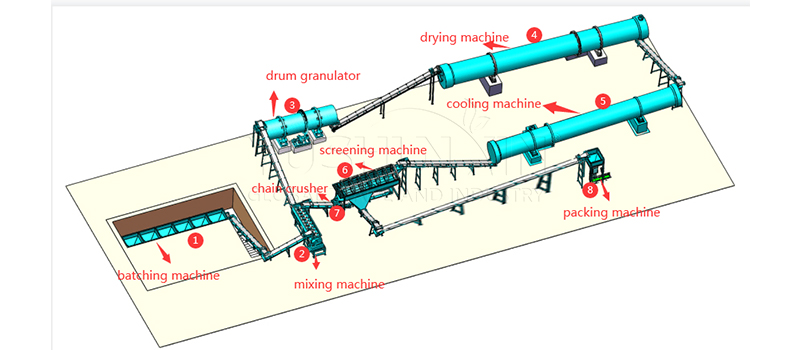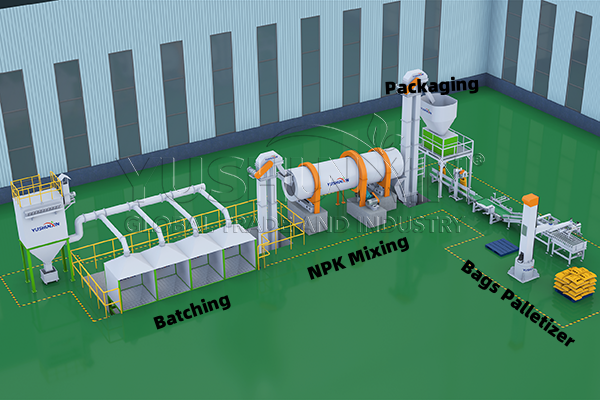For most biofertilizer suppliers, establishing a compound biofertilizer manufacturing plant is a worthy investment. The process of making bio compound fertilizer consists of 4 steps: raw material selection and pretreatment, aerobic fermentation process, granulation after mixing raw material, drying and post-processing. There is a set of compound biological fertilizer making machines on sale in YUSHUNXIN. We can also customize it according to your budget and requirement. Welcome to consult!
How to produce bio compound fertilizer Step by step?
1. Raw material selection and pretreatment
First, select appropriate organic, ino of the biocompound fertilizer you want to produce.
Use an animal manure dehydrator to reduce the water content of animal manure to about 35%. Then use magnetic separation to remove impurities and pick out metal fragments. For straw and plant residues, use a straw crusher or hammer crusher to crush them into 3-5mm in advance.
According to the formula, prepare urea, monoammonium phosphate, potassium chloride, calcium nitrate, ammonium polyphosphate, calcium ammonium nitrate and other raw materials. In order to facilitate subsequent granulation, powdered inorganic raw materials are a better choice. In addition, purchasing a large amount of powdered inorganic raw materials is cheaper, which can save you production costs.
2. Aerobic fermentation process
Aerobic fermentation is the core link of bio-compound fertilizer production. It converts organic materials into stable humus through the metabolic activities of microorganisms, while inactivating pathogens and weed seeds.
You can compost organic materials in trough-type or strip-type composting to form a specific structure to ensure oxygen penetration. The height of the strip-type compost is 1.5-2m, and the width is 2-3m. You can adjust its length according to the site. During the composting process, you need to regularly monitor the temperature, humidity, and oxygen content of the organic pile. Take timely measures to avoid uneven fermentation or local anaerobic odor.
3.Granulation after mixing raw material
Mix the prepared raw materials according to the formula to facilitate subsequent production. There are two granulation methods for granulation of biocompound fertilizer. On the one hand–Wet granulation method. When the water content of the raw material for compound bio fertilizer production is between 30%-45%, choosing a wet pelletizer is a good choice. With its help, the granulated bio fertilizer a higher hardness. On the other hand, you can use dry granulation machine. Compared with wet granulation method, it no needs to drying, cooling the biofertilizer pellets. But you should control the raw material moisture content at 15%-20%.
4. Drying and post-processing
After granulation, in order to ensure better storage of biological compound fertilizer particles, you had better to dry them. Moreover, cooling can prevent agglomeration. Then screening out the compound biofertilizer pellets of ideal size, and the unqualified ones will be granulated again. Then packaging bio fertilizers of different specifications for sale.
When to add bio fertilizer agent in compound biofertilizer making?
In general, the time to add bacteria is before, during, and after compound biofertilizer granulation.
How much does the compound biofertilizer manufacturing plant cost?
The cost of a biological compound fertilizer production line generally ranges from tens of thousands to hundreds of thousands of dollars. YUSHUNXIN can configure the basic compound bio-fertilizer production equipment of different scales for you. At the same time, we can customize the compound biofertilizer making line accroding to your needs. Feel free to contact us!
Top2 hot sale bio compound fertilizer production line in YUSHUNXIN
Bio NPK compound fertilizer production line:
Most biofertilizer manufacturers choose to produce bio NPK fertilizer granules. This is not only because NPK biofertilizer is rich in nitrogen, phosphorus and potassium, but also because granular bio NPK fertilizer is easier to store and transport. Common bio NPK fertilizer ratios are 15:15:15, 12:36:12, or 20:10:20. You can use a dynamic batching machine to accurately mix them. Mix the raw materials and stir them thoroughly before feeding them into the NPK biofertilizer pelleting machine. Then, add the amount of biological agent in the biofertilizer granulation process. Next, dry, cool, coat, and pack the NPK biofertilizer pellets.
The bulk blended biofertilizer production process:
The process of making bulk blended biofertilizer is simple. Mix several single fertilizers in a certain proportion and add biological agents during the mixing process. YUSHUNXIN can provide you with a complete blended bio fertilizer production line. Use a static batcher to feed the raw materials into the drum BB fertilizer for mixing and stirring. It can produce continuously. Pack after mixing.
Latest cases of compound biofertilizer manufacturing plants setup in the world:
As an experienced fertilizer equipment manufacturer, YUSHUNXIN has helped customers around the world successfully establish bio-compound fertilizer factory. Such as Pakista, Algeria and Indonesia. At the same time, we have established branches in Indonesia, Algeria, Russia and other places. You can communicate with us face to face about the production plan of bio-compound fertilizer. If you are interested, welcome to consult us!
In addition to the compound biofertilizer manufacturing plant, there are many other types line on sale in YUSHUNXIN. Such as liquid biofertilizer making plant, cow manure biofertilizer unit, and bio organic fertilizer production line. All of them are for sale at the preferential prices.
Content


